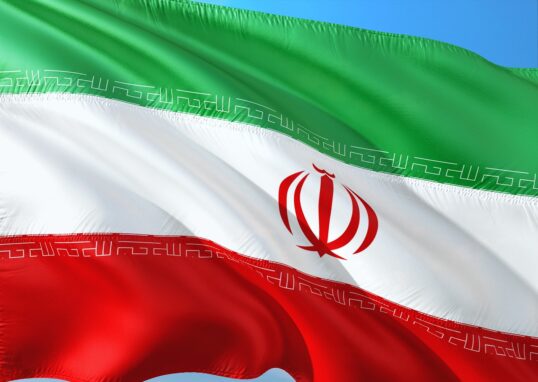
Samsung: The Story of Innovation, Technology, and Global Success
Samsung is among the strongest and most familiar technology brands globally. It is famous for its smartphones, television sets, and electronics and is a representation of contemporary innovation. The history of Samsung from a small trading company in Korea to that of a global leader in the field of technology is inspiring. This article will discuss the history of Samsung, how it became successful, major products, achievements, and its principal rivals in the international market. 
The Beginning of Samsung
Lee Byung-chul founded Samsung on March 1, 1938, in Daegu, Korea. Initially, it was not an electronics company. It was a tiny trading company dealing in dried fish, noodles, and groceries. The word Samsung means “three stars” in Korean, which represents grandeur, power, and eternity. In its early years, Samsung evolved slowly as a trading company. Its founding father had a desire that Samsung should represent something enormous and long-lasting. Over time, Samsung diversified into other sectors such as textiles, insurance, and food processing. It wasn’t until the 1960s that Samsung diversified into the electronics industry, which became the cornerstone of its global fame.
Entry into the Electronics Industry
In 1969, Samsung also ventured into the electronics sector by establishing Samsung-Sanyo Electronics, which later on evolved into Samsung Electronics. The first offerings were simple household appliances like black-and-white TVs, refrigerators, and washing machines. The learning technology was the motive of the company, joining hands with Japanese and American firms. Samsung soon became one of the leading electronics brands in South Korea. By the 1970s, Samsung had made an entry in the production of semiconductors, which later on transformed its operations. The vision of Samsung was clear — to compete globally by excelling at technology and manufacturing quality electronics.
Global Expansion and the Rise of Samsung Electronics
The 1980s were when Samsung began its journey across the world. Samsung opened research and development centers in the United States, the United Kingdom, and Japan. This helped increase Samsung’s knowledge base by learning from world technology leaders. In 1983, the company designed its first personal computer, marking the start of its information technology division. The company also invested heavily in semiconductors during the period. The action was one of its wisest ever. By the late 1980s, Samsung had become an international player in the global semiconductor industry, producing memory chips that are used in computers and electronics worldwide. The reputation of the company began to grow very fast, both at home and abroad.
Samsung in the 1990s: The Age of Transformation
The 1990s were the turning point. Under the leadership of Lee Kun-hee, the founder’s son, Samsung transitioned from being a low-cost manufacturer to a quality-and-innovation company. Lee Kun-hee advised his employees directly, as widely reported: “Change everything except your wife and children.” The above line reflected Samsung’s new vision — to quality better, innovate constantly, and manufacture world-class goods. In this decade, Samsung launched its first mobiles and LCD displays. Samsung also turned attention towards design and branding. Towards the close of the decade, Samsung was no longer a Korean corporation — it was an international brand.
The Smartphone Revolution
2000s proved to be a fresh start for Samsung. Samsung ventured into the smartphone market and became one of the strongest contenders in no time. The launch of the Samsung Galaxy series changed everything. Samsung Galaxy smartphones, starting with the Galaxy S in 2010, became international. They had advanced features, stunning looks, and powerful hardware. Samsung also was one of the first companies to introduce huge screen mobile phones and set trends that transformed the entire cellular industry. The Galaxy series openly competed with Apple’s iPhone, starting one of the most iconic battles in the history of technology. Consumers had two giants — Apple and Samsung — that were pushing the smartphone technology as far as they could go.
Innovation and Research
Samsung invests a significant amount of money in research and development (R&D). Every year, the organization spends billions of dollars on developing new technology, products, and ideas. It has R&D facilities across the world — in South Korea, America, India, Germany, and China. Samsung innovation is diversified across numerous fields:
- Smartphones – Advanced cameras, foldable screens, and 5G.
- Semiconductors – Memory chips and processors for global brands.
- Displays – OLED and QLED displays used in TVs and smartphones.
- Home Appliances – Smart refrigerators, washing machines, and air conditioners.
- Artificial Intelligence (AI) and Internet of Things (IoT) – Smart connection of devices. Samsung’s strength is in its ability to harmonize creativity, technology, and strong production capabilities.
Samsung and Sustainability
Samsung is also interested in sustainability and environmental stewardship. Samsung will reduce carbon emissions, utilize renewable energy, and recycle material in the production process. Samsung has launched environmentally friendly products such as energy-efficient appliances and recyclable packaging. Samsung’s “Planet First” program promotes green technology and clean production. Samsung is also interested in education and social programs globally, helping communities around the world.
What you visit SAMSUNG company ? 삼성이노베이션뮤지엄
The Suwon, South Korea-based Samsung Innovation Museum welcomes visitors. You are able to experience Samsung’s technology history, see exhibits on semiconductors, mobile phones, and innovations. The Samsung d’light experience center in Seoul near Samsung’s headquarters offers interactive exhibitions of Samsung’s latest technologies.
Note: The huge corporate complexes of big firms (like Samsung Town in Seoul) are not typically open to everyday tourists for full tours.
Why visit
It’s a chance to see how Samsung developed—from early electronics to modern smartphones and chips. You discover big technology trends (displays, memory, mobile) and get hands-on displays. As a tech enthusiast traveler, it adds a different twist to your South Korean experience. It is also within proximity of Seoul, and thus you can incorporate it into day city wandering.
Practical facts
For the Samsung Innovation Museum: Weekday guided tours last 70-90 minutes. Advance reservations must be made on weekdays.
Address: 129, Samseong-ro, Yeongtong-gu, Suwon-si, Gyeonggi-do, South Korea.
- How to get there: Use public transportation from Seoul to Suwon, or drive.
- Cost and language: Check latest website; exhibitions perhaps in English and Korean.
Tips
- Book ahead if you want a guided tour (especially weekdays). Leave time in your schedule for traveling from Seoul (about 30-60 minutes depending on type).
- Bring a camera: Some exhibitions allow photo taking (check restrictions). Arrive early to avoid crowds. Pair with a visit or stay in Suwon to view the city and the old fortress (if you choose).
🌀 Best Samsung Series Phones – Full Details and Overview
Samsung is one of the top smartphone brands in the world. It makes phones for every type of user — from luxury flagship devices to affordable models. Over the years, Samsung has created several phone series that stand out for their quality, power, and design.
Samsung Galaxy S Series – The Flagship Experience
Galaxy S Series is the crown jewel of Samsung’s smartphones. It is the best design, the fastest processors, and the best cameras. Annually, Samsung releases new models in this series, attracting customers who crave the best performance.
Galaxy S24 Ultra (2024)
The S24 Ultra is the latest and most advanced series model. It comes with a titanium frame, S Pen support, and an awe-inspiring 200 MP main camera. The display is a 6.8-inch QHD+ Dynamic AMOLED 2X with a 120Hz refresh rate for its ultimate smoothness and brightness. The phone uses the Snapdragon 8 Gen 3 for Galaxy processor, which provides premium gaming and multitasking features. The battery lasts long — around 5,000 mAh — and supports super-fast charging. The S24 Ultra is also suitable for creative professionals because of the S Pen stylus, perfect for drawing and note-taking.
Galaxy S23 and S23+
The S23 and S23+ are only slightly smaller but otherwise have all the same features of the Ultra. They have beautiful AMOLED screens, 50 MP cameras, and tiny bodies. The phones are known for their durability and better color production.
Samsung Galaxy Z Series – The Foldable Revolution
Galaxy Z Series is Samsung’s future vision and innovation. They fold or flip into phones, combining fashion and technology in a supreme product. There are two variations — Galaxy Z Fold and Galaxy Z Flip.
Galaxy Z Fold 5
The Z Fold 5 unfurls like a small tablet. It looks like a normal phone when folded; unfolded, it becomes a 7.6-inch large screen for work and leisure. It’s perfect for multitasking — customers are able to keep three apps on screen at a time. It is driven by the Snapdragon 8 Gen 2 processor and thus is very quick. The hinge is better, lighter, and stronger than ever. The screen allows the S Pen to write and draw.
Galaxy Z Flip 5
The Z Flip 5 folds in a vertical, like-a-mirror way. It has a big cover display (3.4 inches) on the outside, which users can use to view messages, take selfies, and manage apps without having to open the phone. It has a 6.7-inch AMOLED screen with vivid colors and silky smooth scrolling inside. It’s fashionable, pocket-sized, and has a lot of power. The Z Flip is popular mainly among young people and fashion-conscious people, who care about miniaturization and technology.
Samsung Galaxy A Series – Perfect Mid-Range Phones
Galaxy A Series is one of the top-selling series from Samsung because of its value for money.
Galaxy A55 (2024)
The Galaxy A55 features a 6.6-inch Super AMOLED display with a 120Hz refresh rate. It is powered by Samsung’s Exynos 1480 chip and supports 5G connectivity. The phone features a 50 MP triple camera, perfect for everyday photos and videos. It also has Gorilla Glass Victus+, so it is durable. The build itself is premium even though it is a mid-range phone. It also gets software updates for a couple of years — something not found in this pricing range.
Galaxy A35 (2024)
The Galaxy A35 is another best-seller, combining affordability with performance. It has a solid camera system, large screen, and 5,000 mAh battery that lasts the day. It’s great for students, travelers, and anyone who wants Samsung quality without the high price tag.
Samsung Galaxy M Series – Budget-Friendly Power
Galaxy M Series is battery and performance-driven at a budget-friendly price. It’s very popular in Asia, Africa, and Latin America.
Galaxy M55 (2024)
Galaxy M55 has a huge 6.7-inch Super AMOLED+ display, 50 MP main camera, and massive 6000 mAh battery. It’s designed for users who watch videos, play games, or browse social media for hours on end.
Galaxy M14
The Galaxy M14 is cheap with great value for money. It boasts a 90Hz screen, 5G support, and a massive 6000 mAh battery — ideal for extended use. It goes full-on for the fundamentals — easy-to-use interface, durability, and price.
Samsung Galaxy Note Series – Power and Productivity
While Samsung has moved the Note series into the S Series (S Ultra models now sporting the S Pen), the Note Series remains iconic.
Galaxy Note 20 Ultra
Note 20 Ultra (2020) remains Samsung’s go-to phone. It has a 6.9-inch screen, a 108 MP main camera, and the S Pen stylus that made it a hit. It was for professionals and artists who were in search of a smartphone to act as a substitute for their notebook. The S Pen offered easy writing, drawing, and editing. Note 20 Ultra is still a classic today for its appearance, velocity, and productivity.
Upcoming and Future Samsung Phones
Upcoming phones will continue to evolve. Some of the upcoming phones may have:
- Galaxy S25 Series with improved AI and camera, Galaxy Z Fold 6 with an even thinner design
- Affordable foldable phones for the masses, Enhanced batteries and sustainability features
- Samsung’s focus on integrating AI, green materials, and software upgrades into its phones ensures that its future phones will be wiser and greener.
- Samsung has developed one of the most extensive ranges of smartphones in the world. Each series appeals to a specific segment — from luxury users to value buyers.
Galaxy S and Z Series lead in innovation and design. A and M Series introduce Samsung to millions of individuals globally. The Note legacy continues in the S Ultra models, meanwhile.
Competitors of Samsung
Samsung operates in many markets, hence has numerous competitors from other big companies worldwide.
Apple Inc.
Apple is Samsung’s biggest rival in smartphones and electronics. Apple focuses on design, brand loyalty, and software integration. Samsung, however, competes with a wide range of devices, offering more variety and affordability.
Huawei
Huawei, a Chinese tech company, became a strong competitor, especially in Asia and Europe. Huawei’s smartphones and telecom equipment challenged Samsung’s dominance. However, U.S. trade restrictions slowed Huawei’s growth in recent years.
Xiaomi
Xiaomi is another fast-rising Chinese brand offering economical smartphones with advanced technology. As being affordable, its smartphones are attracting millions of consumers, especially in India and Southeast Asia.
Sony
Sony rivals Samsung in televisions, cameras, and semiconductors. Sony focuses on quality and reputation, whereas Samsung commands the world market share.
LG
LG, another South Korean firm, competes with Samsung in home appliances and televisions. Though LG stopped making smartphones, it’s a good performer in electronics and televisions. Samsung continues to stand out by never stopping innovating and keeping pace with trends in the market.
Samsung’s Role in the Global Economy
Samsung is the largest employer in South Korea and represents the majority of South Korea’s economy. Samsung exports nearly 20% of South Korea’s total exports. It has manufacturing in most countries, including Vietnam, India, China, and America. Across the globe, Samsung is a giant trendsetter in technology. From smartphones to artificial intelligence, the brand continues to revolutionize the way human beings live and work.
The Galaxy Ecosystem
Samsung’s Galaxy family connects all of its devices. Smartphones, tablets, watches, TVs, and home appliances communicate with each other via the SmartThings app. Convenience and a seamless digital lifestyle is what the ecosystem provides. It is easy for consumers to control their homes, connect devices, and access data. Samsung wants the globe to be smart where everything connects — efficiently and intelligently.
Samsung’s Achievements and Awards
Over the decades, Samsung has received multiple design awards, innovation awards, and sustainability awards. Its Galaxy phones have received global awards for technology and user experience. The firm is also high on international best brand value lists and typically competes with Apple, Google, and Microsoft.
Challenges Faced by Samsung
Besides its success, Samsung has also faced challenges. They have international competition, patent lawsuits (especially against Apple), leadership transitions. The company also faces saturation in the smartphone market and how to establish new growth platforms in aspects such as AI, robotics, and 5G networking. However, Samsung’s strong culture of research and global presence allow it to overcome such challenges as well as stay competitive.
The Future of Samsung
Samsung’s future is innovation and connectivity. It still explores foldable phones, AI devices, and home smart networks. Samsung also spends on quantum computing, biotech, and space technology. With its sound foundation and vision, Samsung will remain a world technology leader for generations to come.
Conclusion
Samsung’s journey from a small Korean trading firm to the world’s leading technology giant is a fantastic one. Its story is one of hard work, innovation, and a desire to use technology to simplify life. The corporation has transformed the way individuals communicate, work, and play. From smartphones to smart homes, Samsung continues to shape the future. Despite growing competition from Apple, Huawei, and other players, Samsung’s focus on quality, innovation, and customer retention is still at the height of the world’s tech industry.










